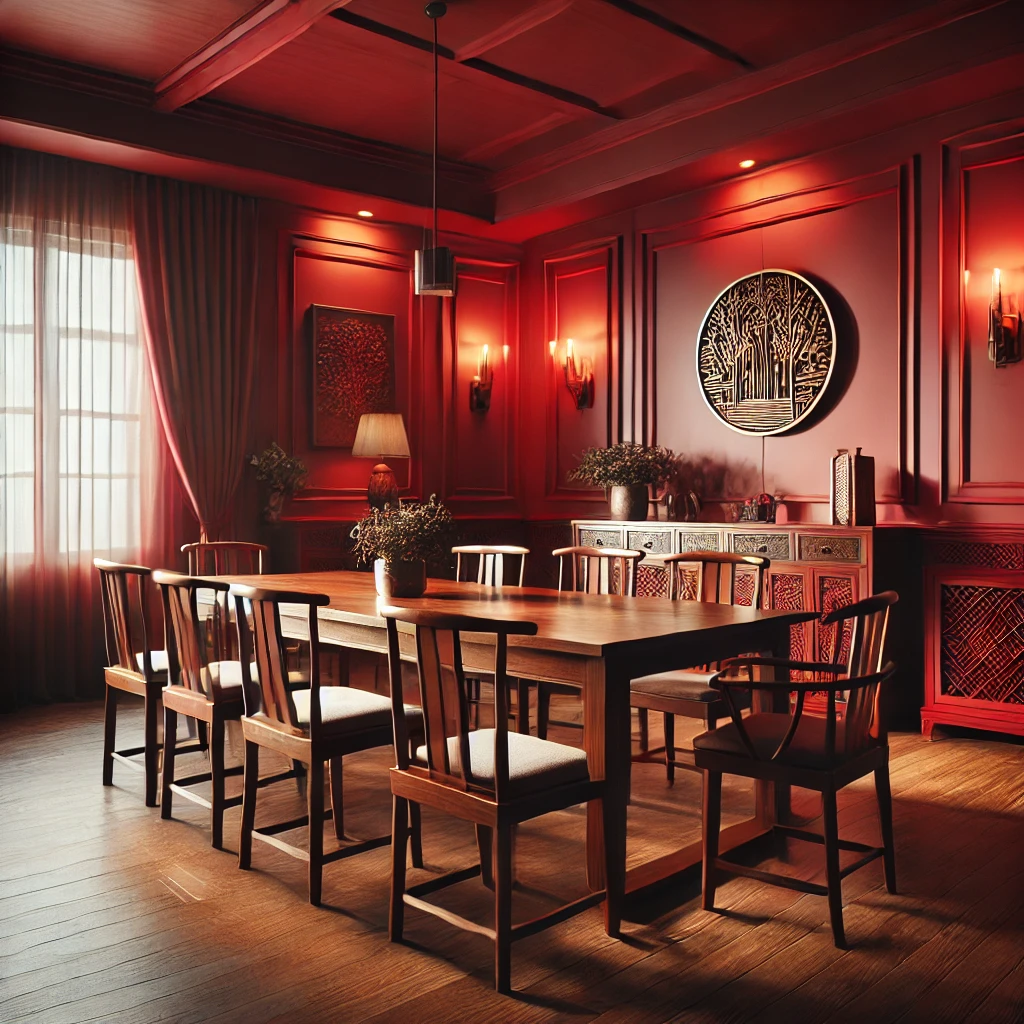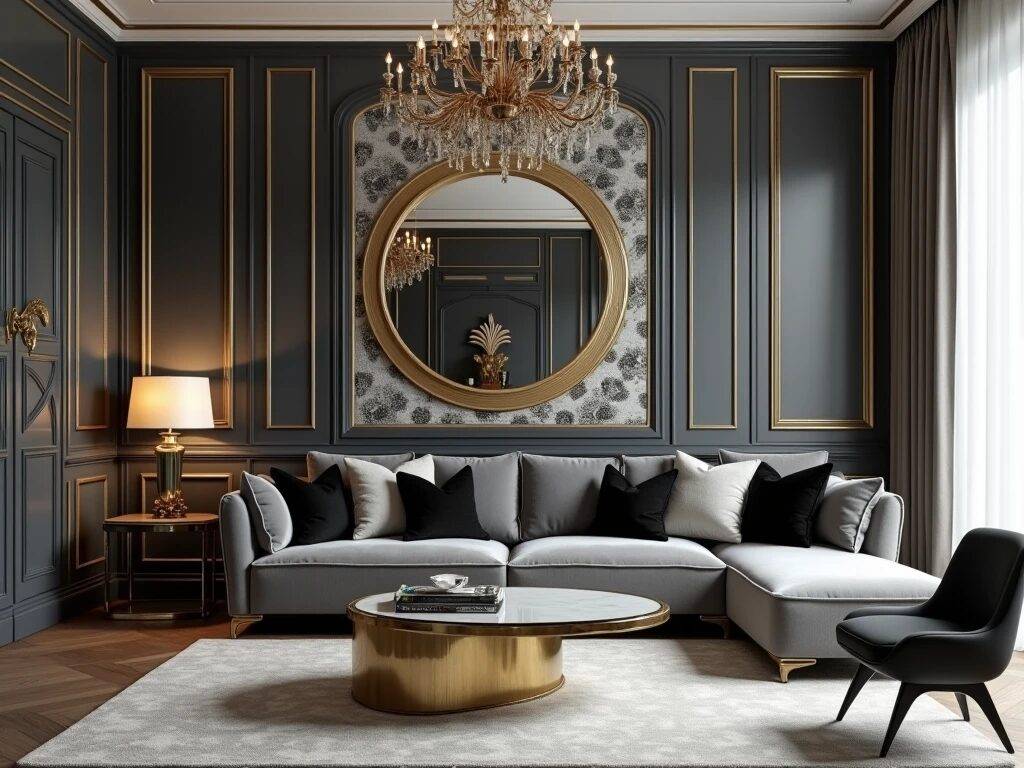1. Understand the Function of Your Room
The key to designing a long narrow living room is understanding what the space needs to do for you and your family. Before jumping into decorating, take a moment to think about how the room will be used. Is it primarily for watching TV, or do you envision it as a space for socializing and hosting friends? Maybe you need a home office area, or a quiet corner to enjoy a cup of coffee and relax. Deciding on the room’s function first helps determine the best layout for the space. For instance, if you love watching movies with the family, you’ll want to ensure the sofa is placed comfortably in front of the TV. For a more work-focused space, consider incorporating a desk and ergonomic seating. Identifying your space’s function will ensure that every furniture piece serves its purpose and the space doesn’t feel cluttered or mismatched. In the end, your long narrow living room should feel like a comfortable and practical space that suits your needs.

2. Maximize the Space with Clever Furniture Placement
Once you’ve decided on the room’s purpose, the next step is to think about how to best arrange your furniture. In a long narrow living room, it’s common to try to line up the furniture along the long walls, but this often leads to a cramped, tunnel-like feel. Instead, try positioning your sofa across the width of the room. This simple change can instantly make the space feel wider and more balanced, creating a more inviting atmosphere. By placing the sofa in the middle of the room, you not only break up the long lines but also create space for additional seating or a small coffee table without crowding the room. For added style and functionality, incorporate a narrow console table or side tables behind the sofa, giving the impression of a “wall” behind you, which can make the space feel more secure and cozy. Remember, smaller furniture pieces like compact sideboards or chairs are your best friend when designing a long narrow living room; they prevent the space from feeling too crowded or heavy.
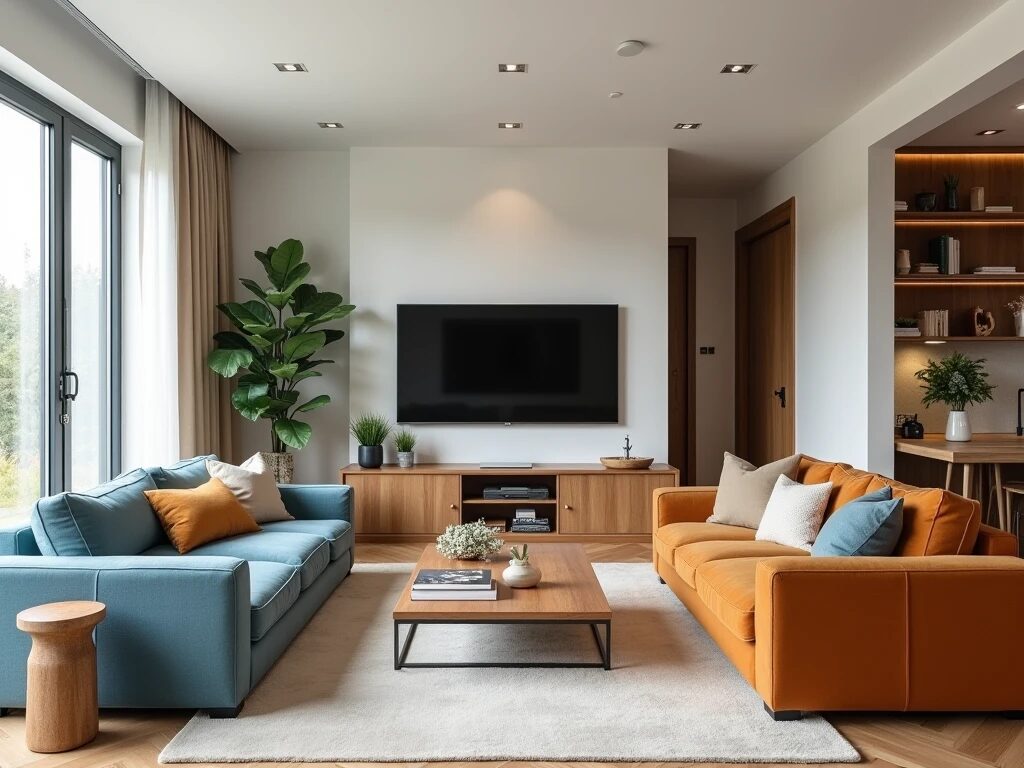
3. Create Zones to Make the Space Feel Larger
One of the most effective strategies for designing a long narrow living room is to create different zones within the space. Instead of viewing the room as one continuous, narrow area, think of it as an open-plan space that can be divided into multiple functional areas. For example, you could have a TV area with the sofa, a cozy reading nook with an armchair in one corner, and perhaps a home office setup in another corner. Using rugs to define each area is a simple yet effective way to visually break up the space and make it feel more organized. Choose rugs that are large enough to go under the legs of your furniture, creating a seamless connection between each area. You don’t need to match the rugs exactly; mixing different shapes, textures, and colors will give the room more character and prevent it from feeling like a long hallway. Zoning your long narrow living room gives the room a sense of purpose and structure, allowing you to enjoy each part of the space without feeling overwhelmed by its length. Plus, creating these zones can make your living room feel more spacious and less cramped.
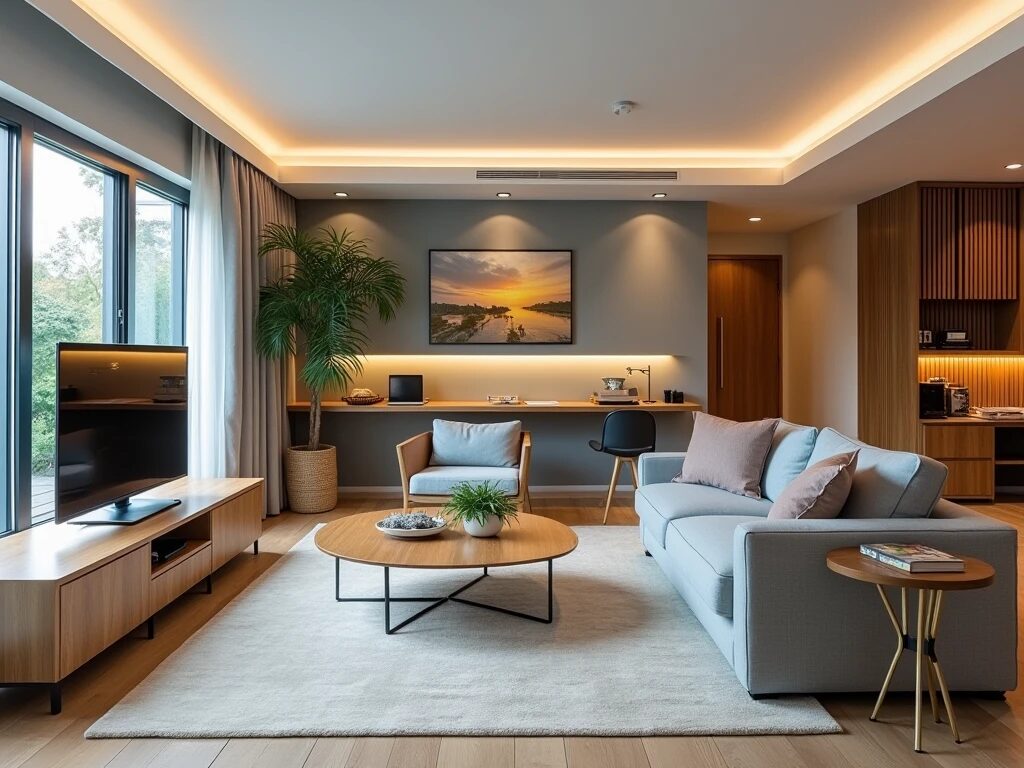
4. Incorporate Focal Points to Add Interest
In a long narrow living room, finding a natural focal point can be a bit of a challenge, especially in new builds where features like fireplaces or large windows are often missing. However, you can create a focal point by strategically positioning a large media unit or a beautiful painting. A focal point not only adds visual interest to the room but also helps to anchor the furniture arrangement, making the space feel more balanced. For example, if you decide to place the TV in the center of the room, the surrounding furniture should face toward it to create a natural flow. Another great option is using a mirror—it reflects light and makes the room appear larger and brighter, which is especially helpful in a narrow room. If you have a large piece of artwork or a statement piece, position it on the wall opposite the seating area to create a natural place for the eye to rest. By introducing a focal point, you can eliminate the sense of the room being a long, empty corridor and transform it into a more visually appealing space.
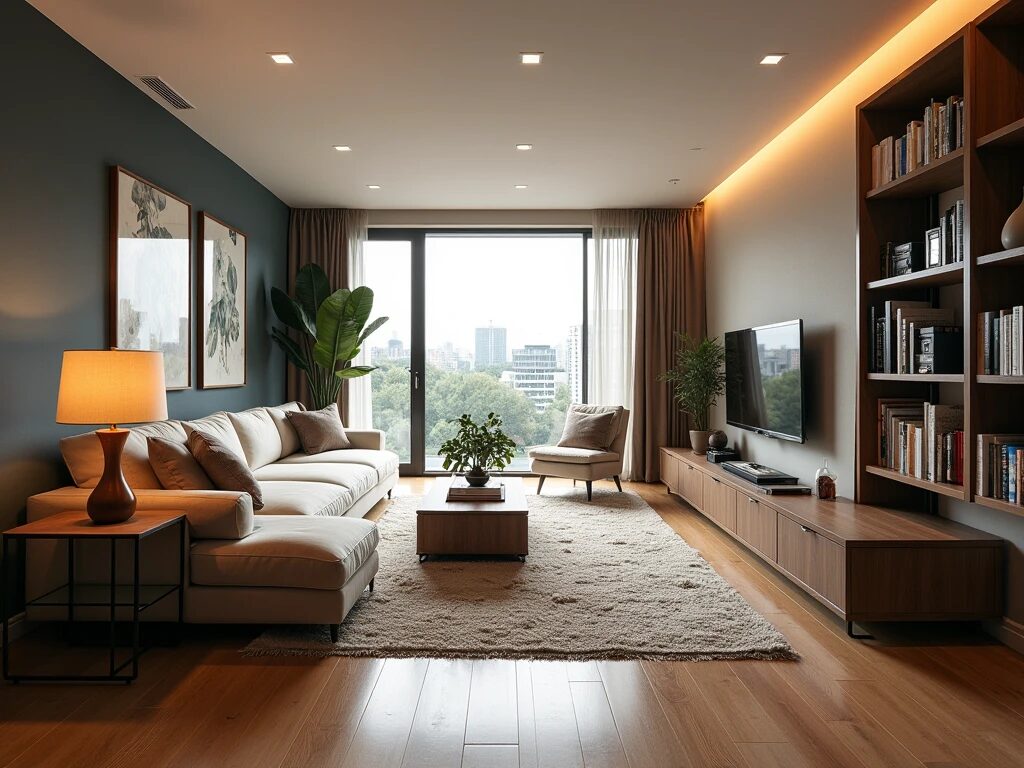
5. Use Color and Lighting to Alter the Perception of Space
The colors and lighting you choose for a long narrow living room can significantly impact how spacious the room feels. For narrow spaces, using dark colors on the far walls can help bring them closer, creating a sense of warmth and coziness. This technique shortens the room visually and helps balance out the long dimensions. On the other hand, the long walls can be painted in lighter tones to give the illusion of a more expansive space. If you love the idea of a bold color on the walls, avoid placing it on the long walls, as it may make the space feel even narrower. Instead, experiment with color blocking to define different zones within the room. For example, you could use a rich accent color on one end of the room to highlight a reading nook or home office area. Another powerful tool in your design arsenal is lighting. Use pendant lights or tall lamps to draw the eye upward, which can make the room feel less confined. A good lighting strategy can open up the space and create different moods, making your long narrow living room feel more inviting and spacious.

6. Optimize Corner Spaces for Function and Storage
In a long narrow living room, corners can easily be overlooked, but they are some of the most valuable spaces for adding both function and storage. If you have a corner that is not currently being used effectively, consider placing a comfortable armchair, creating a cozy reading nook with a small table, or even installing floating shelves to add storage without overcrowding the room. By utilizing the corners, you break up the long lines of the room and add visual interest. If you’re working with limited space, you can add clever storage solutions like closed storage units or baskets to keep the space tidy and clutter-free. For example, placing a small storage ottoman or console table in the corner can keep your living room organized while maintaining its aesthetic appeal. Using the corners to your advantage can also help keep the center of the room open and free, making the room feel less cramped. Whether for seating, storage, or decoration, don’t neglect the corners of your long narrow living room—they are essential for creating a more functional and visually appealing layout.
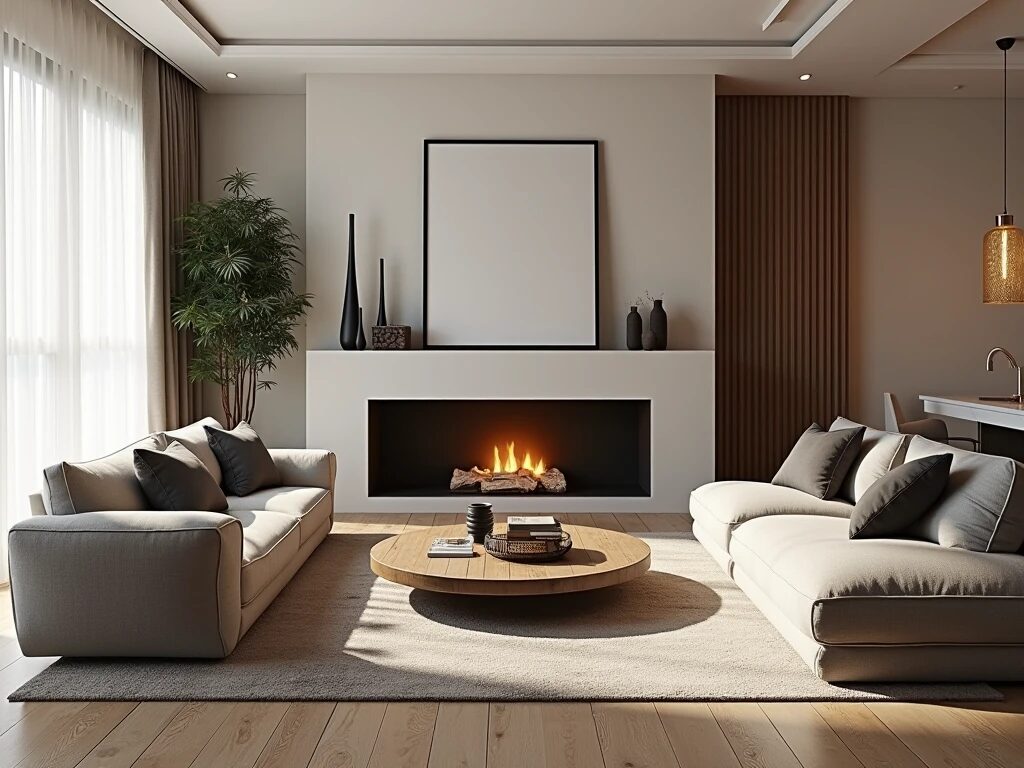
7. Furniture Placement: Think Beyond the Walls
One of the most common mistakes people make when designing a long narrow living room is positioning all the furniture along the long walls. While this may seem like a natural way to maximize space, it often leads to the room feeling even longer and more cramped. Instead, try to place your sofa across the width of the room. This simple shift can create a sense of openness and balance by breaking up the long lines of the room. Positioning the sofa in the middle of the room gives the space more depth and draws attention away from the narrowness of the walls. To make the seating area feel more anchored, add a console table or sideboard behind the sofa. This not only adds functionality by providing extra storage but also visually “anchors” the sofa, making it feel less isolated in the center of the room. By rethinking how you arrange the furniture, you can transform a long narrow living room into a much more comfortable and inviting space.
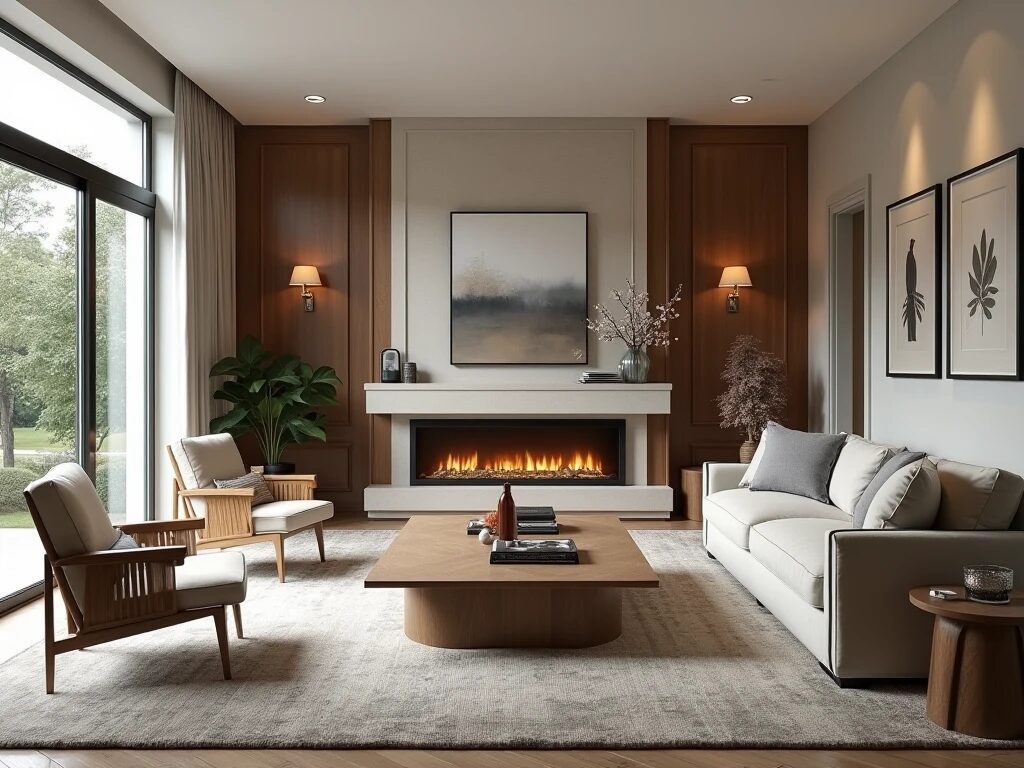
8. Create Zoning with Rugs and Furniture
Zoning is a fantastic technique to divide a long narrow living room into separate, functional areas. Instead of treating the space as a single elongated room, think of it as an open-plan area where you can create distinct zones for various activities. For example, one area can be dedicated to watching TV, while another could be for reading, relaxing, or even working. Rugs are an excellent tool for defining these zones. A large rectangular rug under the sofa area creates a visual boundary, while a smaller rug in a corner can help to designate a cozy reading nook or a home office area. The key is to mix and match shapes and textures in your rugs to visually break up the room, making it feel less like a long tunnel. For example, a rectangular rug near the TV area can be paired with a smaller, round rug near a seating area. When you use rugs to define spaces, it not only makes the room feel more organized, but it also adds a layer of warmth and personality.
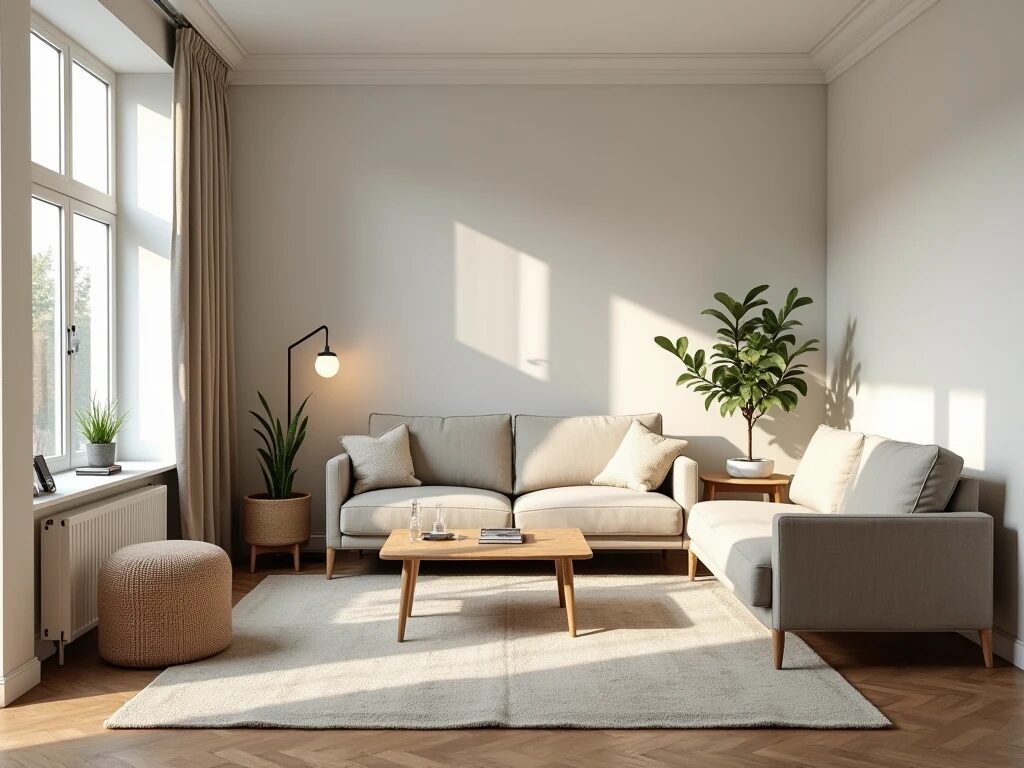
9. Maximize Vertical Space with Shelving and Wall Art
When dealing with a long narrow living room, it’s essential to make the most of every inch, especially vertical space. Tall shelving units or wall art can help draw the eye upward, creating the illusion of more space. Adding tall shelves or cabinets along the walls allows you to store books, decor, or even display plants, without taking up too much floor space. This creates the sense that the room is taller and more expansive, rather than cramped. You can also introduce wall art above furniture or along the walls to add visual interest. Large mirrors, especially strategically placed near windows, can make the room feel even bigger by reflecting light. Try to avoid overcrowding the walls with too many smaller items, as this can make the room feel cluttered. Instead, focus on a few large, statement pieces that draw the eye and contribute to the overall aesthetic. By utilizing the vertical space wisely, you can make your long narrow living room feel more spacious and balanced, without sacrificing style or functionality.
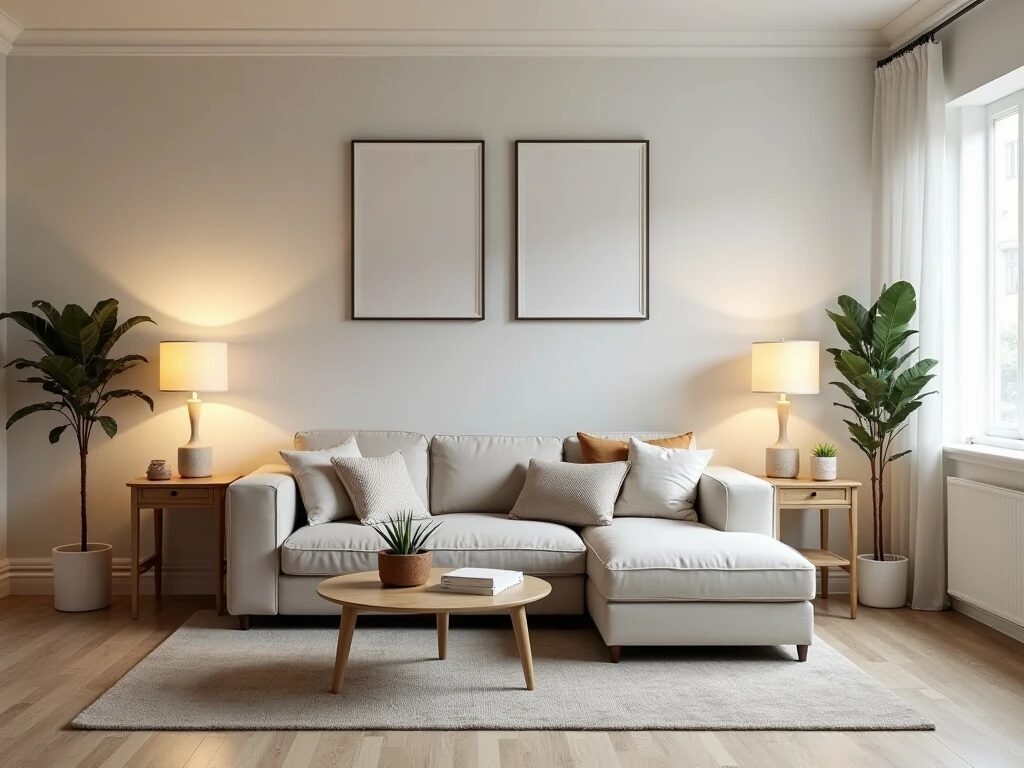
10. Play with Color: Bold End Walls for Impact
One of the most effective ways to alter the perception of a long narrow living room is through the strategic use of color. The color on your walls can dramatically change how the space feels. To reduce the perceived length of the room, consider using darker shades on the end walls. A deep color on the shorter walls can bring them closer together, creating a cozier, more intimate atmosphere. Shades like deep blue, charcoal, or forest green can make the room feel less elongated. However, be cautious with the long walls—a bold color here can have the opposite effect, making the room feel even narrower. If you’re not sure where to start, consider a color blocking technique, where you divide the walls into sections of different colors or patterns. This can add visual interest and break up the long expanse of the walls, creating a more dynamic and visually balanced space. Combining these color strategies can help you avoid the “tunnel effect” and make your long narrow living room feel inviting and stylish.
11. Use Corner Furniture to Maximize Every Inch
Corners are often overlooked, but they are some of the most underutilized spaces in a long narrow living room. These areas can be perfect for adding small, functional pieces of furniture that help to create a cozy and organized space. For example, a comfy armchair or a small side table can be placed in a corner to form a reading nook or a quiet spot for relaxation. Corner furniture allows you to maximize your floor space without crowding the middle of the room. In addition to seating, you can place a small desk or storage unit in the corners to further optimize space. A corner sofa can also work wonders in breaking up the room and dividing it into separate zones. The goal is to make the most of every inch of space, even in areas that typically get ignored. By using corner furniture, you can give the room a sense of structure and balance, while ensuring that all areas are functional and welcoming.
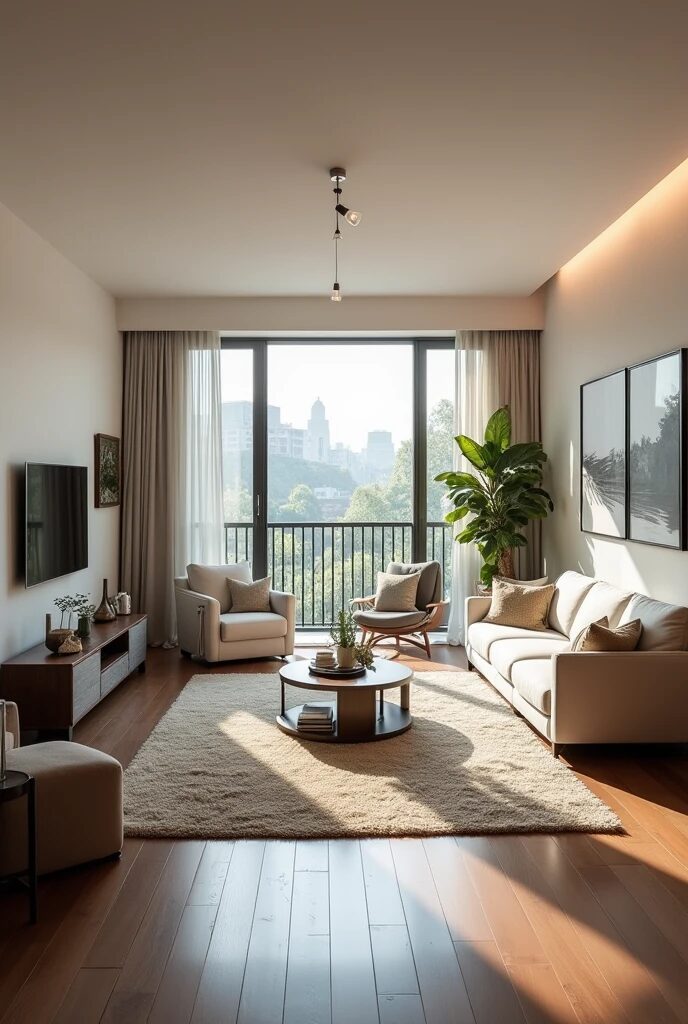
12. Lighting: Create Layers for Depth and Warmth
Lighting plays a crucial role in transforming a long narrow living room from cold and uninviting to warm and welcoming. To achieve this, think about layering your lighting—using a combination of ambient, task, and accent lighting. Start with overhead lights, such as a pendant or chandelier, to provide general illumination. Then, add task lighting, like table lamps or floor lamps, to provide focused light for reading or other activities. Accent lighting is essential for highlighting specific areas or features of the room, like artwork or shelves. Consider placing floor lamps or table lamps near the sofa or in corners to create a cozy atmosphere. A well-lit room doesn’t just help with functionality; it also adds depth, making your long narrow living room feel more expansive. Use lighting to draw attention to different zones and furniture areas, and experiment with warm light to make the space feel more inviting.
13. Add Textures: Mix Materials to Bring Warmth
Adding textures to your long narrow living room can make a world of difference in creating a cozy, lived-in feel. Rather than sticking to one material or finish, mix different textures to bring warmth and dimension to the space. For example, combine a soft fabric sofa with a leather chair, or pair a woven rug with a metal coffee table. These combinations add visual interest and make the room feel less flat. Don’t forget to incorporate textiles like cushions, throws, and curtains to soften the space. Textiles are a great way to add color and pattern without overwhelming the room. They also contribute to the tactile experience of the room, making it feel more comfortable and inviting. By layering textures in your long narrow living room, you create a multi-dimensional space that feels rich and welcoming.

14. Consider Multi-Functional Furniture
When space is limited, like in a long narrow living room, multi-functional furniture can be a game-changer. Pieces like ottomans that double as storage, or sofas with hidden compartments, allow you to make the most of every inch of available space. A folding desk can easily be tucked away when not in use, creating more room for movement. Additionally, consider modular furniture that can be rearranged to suit different needs. For instance, a modular sofa allows you to move sections around depending on the layout of the room, while a modular bookshelf can be customized to fit into different corners or spaces. Multi-functional furniture helps you avoid clutter while maximizing the utility of your space. This is an essential consideration when designing a long narrow living room, as it lets you create a flexible, practical environment without compromising on style.
15. Bring Nature In: Use Plants to Soften the Space
To breathe life into a long narrow living room, consider adding some greenery. Plants not only add visual interest, but they also help soften the space and create a more relaxed, inviting atmosphere. Tall plants like snake plants or fiddle leaf figs are perfect for corners, adding height and making the room feel more balanced. Smaller plants can be placed on side tables, shelves, or windowsills to create a harmonious flow throughout the room. Not only do plants purify the air, but they also inject a sense of nature and tranquility into the space. You can even create a small indoor garden or a collection of plants in one area to add texture and color. Bringing nature indoors can make your long narrow living room feel more alive and welcoming, helping to break up the space visually and emotionally.
Conclusion
Designing a long narrow living room may seem like a challenging task, but with the right approach, you can transform it into a stylish, functional space. By focusing on key aspects like furniture arrangement, color choices, and creating distinct zones, you can make the most of the space available. Whether you choose to play with lighting, incorporate multi-functional furniture, or add cozy touches with textiles and plants, there are endless possibilities to create a welcoming and balanced living area. Remember, the goal is to make the space feel more open, inviting, and organized. Embrace the unique shape of your room and turn it into a cozy retreat that meets all your family’s needs.
With a little creativity and thoughtful planning, your long narrow living room can become the heart of your home—a space that not only looks good but feels comfortable and reflects your personal style.
FAQs
Q1: How can I make a narrow living room feel wider?
To make a narrow living room feel wider, try placing your sofa across the width of the room rather than along the long walls. This breaks up the elongated lines and gives the room a more open and balanced feel. Additionally, using light colors on the walls and incorporating mirrors or reflective surfaces can help open up the space visually.
Q2: What kind of furniture works best in a long narrow living room?
In a long narrow living room, opt for modular furniture that can be rearranged to fit your needs. A corner sofa works well in breaking up the space and creating different zones. Multi-functional furniture, like a sofa that doubles as storage or a foldable desk, can also maximize space without cluttering the room.
Q3: How can I use color to make my long living room more inviting?
Color can have a significant impact on the atmosphere of your long narrow living room. For example, painting the end walls in a darker color can visually shorten the length of the room, making it feel cozier. On the other hand, lighter shades on the longer walls help open up the space. Using color blocking on the walls can also create visual interest and divide the space into smaller, more manageable zones.
Q4: What types of lighting should I use in a long narrow living room?
To make your long narrow living room feel more inviting, use a combination of ambient, task, and accent lighting. Overhead lighting provides general illumination, while table lamps or floor lamps can add warmth and focus on specific areas. Additionally, accent lighting can highlight decorative elements or create a cozy atmosphere in certain zones of the room.
Q5: How can I add storage without overcrowding the space?
Incorporate corner furniture or multi-functional pieces like ottomans that offer hidden storage. Wall-mounted shelves or floating cabinets are great for saving floor space while still providing ample storage. If you need more storage options, use baskets or storage benches to keep clutter organized and out of sight.
